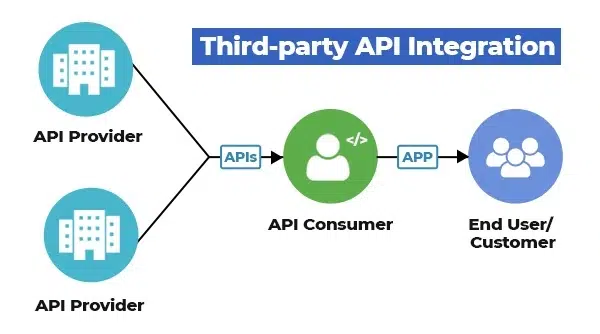Integrating Third-Party APIs into Admin Panels for Enhanced Functionality
1. Introduction to Third-Party APIs and Admin Panels
1.1 Introduction to Third-Party APIs and Admin Panels
Third-party APIs are like the cool kids at the software party – they bring functionality and features from other services to your own application without you having to reinvent the wheel. Think of them as the handy connectors that allow different pieces of software to talk to each other and share information.
1.2 Role of Admin Panels in Business Operations
Admin panels are the control centers of your digital kingdom. They offer a user-friendly interface for managing, monitoring, and fine-tuning the internal operations of your application. Whether it’s user management, content updates, or system configurations, admin panels empower teams to efficiently run software systems without needing deep technical expertise.

2. Benefits of Integrating Third-Party APIs

2.1 Enhanced Functionality and Features
By integrating third-party APIs into your admin panel, you’re basically giving your software a turbo boost. You can tap into a whole smorgasbord of features and functionalities that you didn’t have to build yourself. Need payment processing? There’s an API for that. Want to integrate social media sharing? There’s an API for that too.
2.2 Streamlined Processes and Workflows
Say goodbye to manual data entry and time-consuming processes. Integrating third-party APIs into your admin panel can automate tasks, streamline workflows, and make your life a whole lot easier. From pulling in real-time data to automating repetitive tasks, APIs can transform your admin panel into an efficient powerhouse.
3. Key Considerations for Integrating Third-Party APIs into Admin Panels
3.1 Compatibility and Scalability
Before you go API-crazy, make sure the third-party APIs you’re integrating play nice with your existing tech stack. Compatibility issues can lead to headaches down the road, so do your homework and ensure the APIs you choose are scalable and future-proof.
3.2 Data Security and Privacy
With great power comes great responsibility. When integrating external services into your admin panel, you’re opening up your application to potential security risks. Make sure to prioritize data security and privacy by vetting APIs for robust security measures and encryption protocols. By ensuring that these APIs meet the highest standards of network security and data security, you can protect your users’ sensitive information and maintain trust.

4. Best Practices for Secure Integration
4.1 Authentication and Authorization Protocols
Implementing efficient data storage, retrieval, and processing mechanisms optimizes data handling within the admin panel. Utilizing databases, caching strategies, and data indexing techniques improves system performance and responsiveness.
4.2 Error Handling and Monitoring
Security is like a good lock on your digital front door. Implement strong authentication and authorization protocols to ensure that only authorized users and systems can access your admin panel and the integrated APIs. Think of it as setting up bouncers to keep out unwanted guests. By enforcing multi-factor authentication (MFA), using OAuth tokens, and securing API keys, you can add layers of protection that make it much harder for unauthorized users to gain access.
5. Case Studies: Successful Implementation of Third-Party APIs in Admin Panels
5.1 Company A's Integration Journey
Leading tech startup, decided to integrate a popular payment gateway API into their admin panel to streamline payment processing for their customers. By doing so, they were able to provide a seamless user experience and increase customer satisfaction. Through careful planning, testing, and collaboration with the API provider, Company A successfully implemented the API, resulting in a significant boost in transaction efficiency and overall revenue.
5.2 Lessons Learned from Company B's Experience
A mid-sized e-commerce company embarked on a journey to integrate a shipping API into their admin panel to automate order fulfillment and enhance shipping tracking capabilities. Despite facing initial challenges with data synchronization and API compatibility, the company learned the importance of thorough research, clear communication with API providers, and continuous monitoring and optimization.
6. Future Trends in API Integration for Admin Panels
6.1 Machine Learning and AI Integration
As technology continues to advance, integrating machine learning and AI capabilities into admin panels through third-party APIs is becoming increasingly popular. By leveraging AI algorithms for data analysis, predictive insights, and personalized recommendations, admin panels can enhance decision-making processes, automate repetitive tasks, and deliver tailored user experiences.
6.2 IoT and Connected Devices Integration
The rise of IoT devices presents a new frontier for API integration in admin panels. By connecting admin panels with IoT sensors, devices, and systems through APIs, businesses can monitor and control various processes remotely, collect real-time data for analysis, and improve operational efficiency. From smart building management to inventory tracking in warehouses, integrating IoT and connected devices APIs offers endless possibilities for streamlining workflows, reducing costs, and enhancing productivity in diverse industries. As this trend unfolds, businesses that embrace IoT integration stand to gain a competitive edge in the evolving digital landscape.



